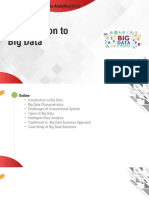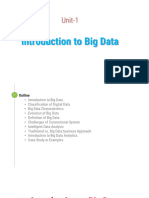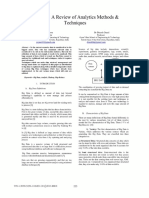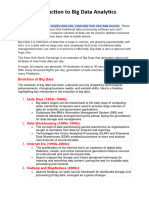0% found this document useful (0 votes)
17 views31 pagesBig Data-Intro
The document provides an overview of Big Data, defining it as a massive collection of complex data that traditional tools cannot efficiently process. It discusses the importance of Big Data in various fields, including business and healthcare, and highlights the benefits of Big Data analytics. Additionally, it covers the characteristics, types, and challenges associated with Big Data, along with potential solutions like Hadoop.
Uploaded by
mamakemroslyCopyright
© © All Rights Reserved
We take content rights seriously. If you suspect this is your content, claim it here.
Available Formats
Download as PDF, TXT or read online on Scribd
0% found this document useful (0 votes)
17 views31 pagesBig Data-Intro
The document provides an overview of Big Data, defining it as a massive collection of complex data that traditional tools cannot efficiently process. It discusses the importance of Big Data in various fields, including business and healthcare, and highlights the benefits of Big Data analytics. Additionally, it covers the characteristics, types, and challenges associated with Big Data, along with potential solutions like Hadoop.
Uploaded by
mamakemroslyCopyright
© © All Rights Reserved
We take content rights seriously. If you suspect this is your content, claim it here.
Available Formats
Download as PDF, TXT or read online on Scribd
/ 31
























































































